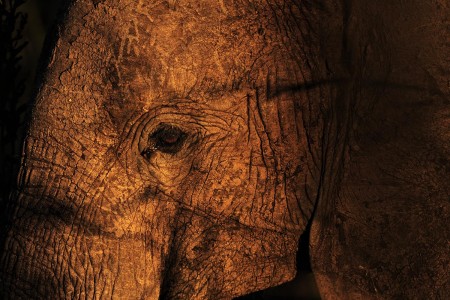
An elephant in Mikumi National Park, which is next to the Selous Game Reserve. Across the border in Mozambique, nearly half of the elephants have been killed in the past five years. Photo by Daniel Hayduk
Mozambique has lost nearly half of it’s elephants in the last five years — many at the hands of poachers from Tanzania, says a wildlife campaign group.
Alastair Nelson of the Wildlife Conservations Society (WCS) says the poachers enter Mozambique from Tanzania, mostly through the Niassa National Reserve, which shares a wildlife corridor with Tanzania’s Selous Game Reserve.
Deaths in the Niassa National Reserve account for 95 percent of Mozambique’s elephant losses in the past five years, says the WCS.
Just over 6,000 elephants are thought to remain in the Niassa Reserve.
“[The north] has always been a remote and poorly governed area, with an underlying level of corruption,” says Nelson.
“The major issue is governance. Some district police and border guards are being paid off, some even rent out their own firearms.”
Overall, 48 percent of Mozambique’s 20,000 elephants have been killed for their ivory in the past five years, he says.
On the Tanzania side, the number of elephants in the Selous plunged from nearly 40,000 to just over 13,000 from 2009 to 2013.
“The number of elephants has fallen dramatically in the past year, which is a matter of great concern for us”, says Tanzania’s Natural Resources and Tourism Minister Lazaro Nyalandu.
On Monday, the governments of both countries signed an agreement to protect the cross-border region of the conservation areas.
Mozambique did not make the killing of protected animals illegal until 2014.
Earlier this month, police in Mozambique seized 1.3 tonnes of ivory and rhino horn with a stret value of over $6 million USD (12 billion TSH), representing the deaths of about 200 animals.
According to South African media, the 65 rhino horns seized in the bust were stolen from police lockup last Friday.
It’s estimated that 30,000 elephants are killed across the continent each year.
In Africa, approximately 470,000 elephants remain in the wild; a century ago there were several million.
